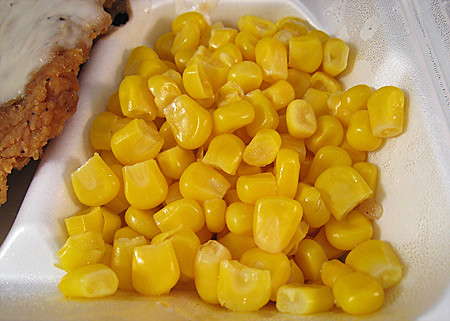jmdaniel
Has A Well Known Member
Found this in my exhaust. Hmmmm....








As far as the linking of the two sides of the exhaust, I believe that is supposed to help balance out the exhaust pulses and increase the scavenging of the combusted gasses. (Which is why you see many aftermarket automobile header/exhaust systems that have a "H" or "X" pipe installed between the two exhaust banks.)I've heard the opposite from people complaining about the lack of cross-over pipe on the Holeshot headers. They say that a cross-over pipe would improve low-end torque.Hey exhaust geniuses...
As has been pointed out, this exhaust is 4 - 2(briefly) then 1 - 2. Wouldn't there be a low end torque advantage to putting a divider in the big plenum that forms the "1" part when removing those nasty cat guts. So it would just be a 4 into 2 exhaust.
So long as you aren't using the O2 sensor anyway that is...
Does anyone know the purpose of the cross-over between the pipes for cylinders 2 and 3 on the stock header?
As for the O2 sensor, Ithinkhope it's safe to assume that the average of 2 cylinders will be close enough to the average of all 4:
But all 4 cylinders already come together on the stock header (just before splitting into 2 again where the cats are); what's the point of connecting 2 and 3 so close to the exhaust outlet on the engine?As far as the linking of the two sides of the exhaust, I believe that is supposed to help balance out the exhaust pulses and increase the scavenging of the combusted gasses. (Which is why you see many aftermarket automobile header/exhaust systems that have a "H" or "X" pipe installed between the two exhaust banks.)I've heard the opposite from people complaining about the lack of cross-over pipe on the Holeshot headers. They say that a cross-over pipe would improve low-end torque.Hey exhaust geniuses...
As has been pointed out, this exhaust is 4 - 2(briefly) then 1 - 2. Wouldn't there be a low end torque advantage to putting a divider in the big plenum that forms the "1" part when removing those nasty cat guts. So it would just be a 4 into 2 exhaust.
So long as you aren't using the O2 sensor anyway that is...
Does anyone know the purpose of the cross-over between the pipes for cylinders 2 and 3 on the stock header?
As for the O2 sensor, Ithinkhope it's safe to assume that the average of 2 cylinders will be close enough to the average of all 4:
Tek
It has got to be something to do with wave fronts and timing. I'm not smart enough (or industrious enough) to figure it out, but the idea is the the passing high pressure wave from one cylinder puts a slight vacuum on the cross connected pipe. That vacuum will better scavenge the cylinder if the timing is correct.But all 4 cylinders already come together on the stock header (just before splitting into 2 again where the cats are); what's the point of connecting 2 and 3 so close to the exhaust outlet on the engine?As far as the linking of the two sides of the exhaust, I believe that is supposed to help balance out the exhaust pulses and increase the scavenging of the combusted gasses. (Which is why you see many aftermarket automobile header/exhaust systems that have a "H" or "X" pipe installed between the two exhaust banks.)I've heard the opposite from people complaining about the lack of cross-over pipe on the Holeshot headers. They say that a cross-over pipe would improve low-end torque.Hey exhaust geniuses...
As has been pointed out, this exhaust is 4 - 2(briefly) then 1 - 2. Wouldn't there be a low end torque advantage to putting a divider in the big plenum that forms the "1" part when removing those nasty cat guts. So it would just be a 4 into 2 exhaust.
So long as you aren't using the O2 sensor anyway that is...
Does anyone know the purpose of the cross-over between the pipes for cylinders 2 and 3 on the stock header?
As for the O2 sensor, Ithinkhope it's safe to assume that the average of 2 cylinders will be close enough to the average of all 4:
Tek
Toilet? What's dat? You must be a high class poooping falooting hi tech redneck, eh? :****:Whooo ............. News Flash!!!Nice job - beyond my skills...
This from the guy who can't flush a toilet without directions :dribble:
:haha: :haha: :haha: Yer Killin' me carver
:jester:










Let me guess...you ate both those hand fulls and... **** CORNUTS!!! :lol2:Found this in my exhaust. Hmmmm....



Who you callin redneck ya ball licker.. :lol:Toilet? What's dat? You must be a high class poooping falooting hi tech redneck, eh? :****:Whooo ............. News Flash!!!Nice job - beyond my skills...
This from the guy who can't flush a toilet without directions :dribble:
:haha: :haha: :haha: Yer Killin' me carver
:jester:

